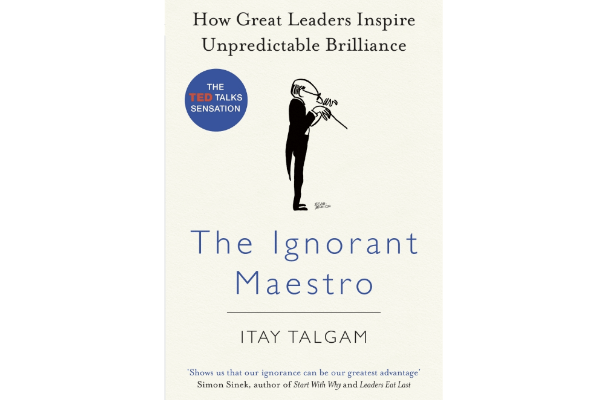At FocusU, we believe that leadership lessons can come from anywhere – offices, factories, classrooms – and even cricket fields. In our ongoing initiative of sharing book reviews that spark leadership thinking, one title that’s made a lasting impression on many of us is AB by AB de Villiers.
Yes, we’re talking about the South African cricketing legend whose ability to bat 360° is matched only by the depth of his character and leadership style. While the book covers records, match stats, and cricketing milestones, what resonated with us most were the leadership lessons woven through his life and decisions.
In our experience, sports biographies are a goldmine of inspiration – especially when it comes to building resilience, owning outcomes, and leading from the front. This book was no exception.
What follows is our reflection on some of the most powerful lessons from AB de Villiers’ journey, and how they apply to leadership and learning in the corporate world.
Related Reading: 5 Movies To Inspire You To Dream Big
1. Flexibility – A Hallmark of Great Team Players
Table of Contents

One of the most quoted incidents from the book is when AB was asked by his coach to bat down the order—a spot less glamorous and more sacrificial. His reply?
“Okay!”
No resistance. No ego. Just a simple, team-first acceptance.
In our leadership workshops, we often share this anecdote while discussing adaptability. Because here’s the truth: the modern workplace rewards flexibility far more than rigidity.
Whether it’s adapting to new roles, adjusting priorities mid-project, or jumping in to support a teammate – great leaders (and great team players) embrace change with grace.
L&D Takeaway:
Include activities that simulate last-minute changes or role reversals. Help managers reflect on their reactions and examine the internal resistance to flexibility. A story like AB’s makes this lesson more relatable and real.
2. Accountability – Owning the Outcome, Win or Lose

After a crushing loss, it’s tempting to disappear. But AB didn’t.
Whether he was captain or player, win or lose, AB would face the press, own the result, and talk about what the team could do better. This kind of vulnerability and responsibility is what makes people want to follow a leader.
In our experience, teams are far more forgiving of mistakes than they are of finger-pointing.
We often encourage leaders to ask:
- “What could I have done differently?”
- “What role did I play in this result?”
Accountability doesn’t dilute leadership – it strengthens trust.
L&D Takeaway:
Introduce reflective journaling as part of leadership training. Include prompts like, “A time I took responsibility for something that wasn’t directly my fault” or “A failure I owned and what it taught me.”
Related Reading: 4 Steps To Accountability

“#ProteaFire” – the unofficial anthem of the South African cricket team – was more than just a chant. It was an identity. A mindset.
It told the story of the protea flower that blooms even after fire, symbolizing resilience. The team rallied around it, internalized it, and made it part of their culture.
We’ve noticed that small rituals – songs, stories, inside jokes – often hold teams together during high-pressure moments.
Positivity in leadership isn’t about blind optimism. It’s about choosing hope and enthusiasm as deliberate acts, especially when the odds are against you.
L&D Takeaway:
When running team-building sessions, encourage teams to co-create a rallying cry or visual metaphor. It might feel small, but it often becomes a symbol of shared purpose.
4. Commitment – Choosing the Team, Every Time

AB played 99 consecutive Test matches – a feat of mental and physical resilience. But what stood out even more was his decision to miss the 100th to be there for his child’s first day at school.
It would’ve been a personal milestone. A global record.
But family came first.
We often talk about balance, but what we admire in AB is his clarity in defining what matters most.
We’ve found that when leaders model this kind of intentional prioritization, it gives others permission to do the same. It also sends a strong message: leadership isn’t about burnout. It’s about showing up where you matter most.
L&D Takeaway:
Incorporate discussions about boundary-setting, self-care, and personal values into leadership journeys. The ability to say no is as important as saying yes.
Related Reading: 4 Step Process to Work-Life Balance
5. Selflessness – Playing for the Team, Not the Headlines

In one memorable game, AB was just a few runs away from a personal milestone. But with the match in a delicate state, he chose to play defensively – protecting the team’s interests over his own.
This is a powerful reminder that leadership is not always loud. Sometimes, it’s quiet, sacrificial, and invisible to the scoreboard.
We’ve seen teams where the leader’s selfless actions became the standard, influencing how everyone else behaved. That kind of cultural shift can’t be enforced – it must be lived.
L&D Takeaway:
Share this story during group activities on decision-making. Ask: “What would you have done in AB’s place?” The discussion that follows is often rich and revealing.
6. Balancing Family and Work – The Courage to Choose
The story of AB missing his 100th Test match deserves a second mention – not for the decision itself, but for what it represented to us as L&D professionals.
In a world that glorifies hustle, AB reminded us that real leadership is about clarity and courage. He knew what he stood for. And he made peace with what he gave up.
We’ve noticed that when leaders share such personal decisions openly, it humanizes them. It creates a culture where others feel seen, heard, and safe.
This lesson is especially important for young leaders who often feel pressure to “do it all.”
7. Humility – Being Grounded Despite Greatness
For someone widely regarded as one of the most talented cricketers of his generation, AB comes across in the book as remarkably grounded.
He credits his teammates often. He talks about failures openly. He doesn’t pretend to have all the answers.
In our experience, humility is not about shrinking – it’s about standing tall without needing to cast a shadow on others.
This trait is often what makes leaders truly magnetic. People want to work with someone who’s confident but kind, driven but down-to-earth.
L&D Takeaway:
Add peer feedback into your leadership programs. Let others reflect on how “humble” the leader is perceived. It’s often a surprising and humbling insight.
8. Resilience – Bouncing Back, Again and Again
AB’s career wasn’t without challenges – injuries, defeats, controversies. But what made him stand out was his ability to bounce back stronger each time.
He didn’t hide after a loss. He didn’t over-celebrate after a win. He stayed consistent. Focused.
In our learning journeys, we often emphasize that resilience isn’t a one-time act – it’s a practice.
Cricket, like corporate life, throws curveballs. The question is: How do you react when they come?
Related Reading: Building Resilience
Final Thoughts: What AB de Villiers Taught Us About Leadership
Reading AB reminded us that leadership isn’t about perfection – it’s about presence, humility, and heart. It’s about the small, consistent choices that create impact over time.
We believe that stories like AB’s offer more than inspiration. They offer a living blueprint for how to lead – on and off the field.
And from an L&D perspective, it reaffirms something we’ve long believed:
Sometimes, real leadership development doesn’t happen in a classroom. It happens in life – and in the stories we choose to share from it.
Related Reading: Leadership Lessons From My Grandma
How You Can Use This Book in Your Leadership Programs
Here are a few ways we’ve integrated AB into our leadership development journeys:
- Storytelling Sessions: Use real anecdotes from the book to spark group discussions.
- Reflective Journaling: Create prompts around AB’s decisions. E.g., “Write about a time you put the team first. How did it feel?”
- Themed Activities: Use cricket metaphors in team simulations (e.g., “Captaincy Challenge”) to model real-time decision-making.
- Peer Conversations: Ask managers to share a leadership lesson from a sports hero they admire. The variety of insights is often remarkable.
Related Reading: 4 tips on storytelling for leaders










